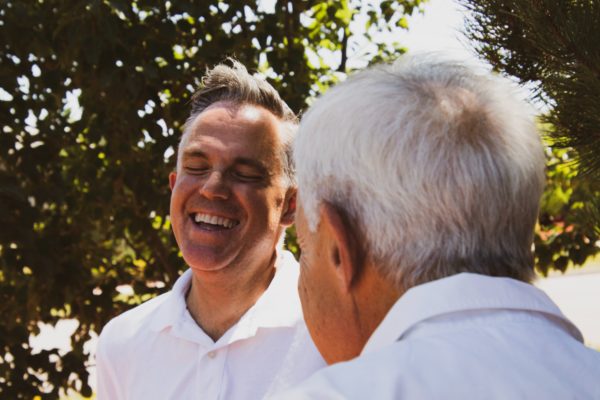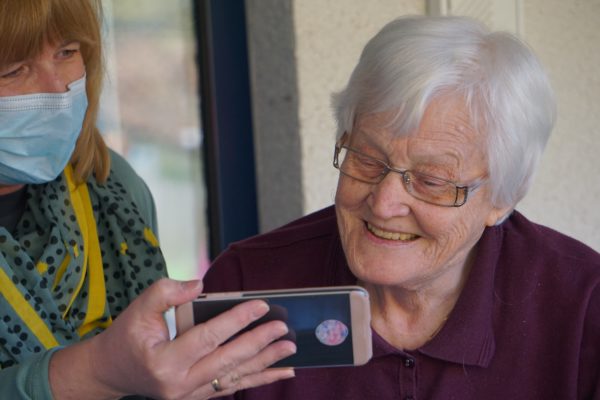
Baby boomers are already having a significant impact on the healthcare system: There are 73 million Americans in this generation, they represent 70% of disposable income spending, and they’re living longer and staying more active than previous aging generations.
So, it’s essential that marketers in healthcare networks and community-based nonprofits understand how this audience interacts with your organization, what they need, and how to communicate with them. It’s smart to do your homework on the boomer generation because it’s likely that your marketing team is made up of GenXers and millennials, who have different interests and experiences than your target audience.
Let’s first look at the demographics. The U.S. Census Bureau estimates 73 million people in the baby boom generation (born from 1946 to 1964). Boomers made up the largest percentage of the adult population until 2019, when they were overtaken by their children’s generation, GenX. By 2030, all boomers will be 65 years or older.
Boomers have above-average household income levels and are likely to be free of mortgage debt, which gives them the greatest spending power of all generations. They’re generally living longer, staying healthier, and keeping more active than their parents.
In other words, they’re likely the wealthiest and most important component of your healthcare organization’s audience.
So, what do boomers care about? They’re goal-oriented and self-motivated. They value trust, loyalty, and close relationships with friends and family. They’re confident, capable, and resourceful. They’ve seen some of the greatest advances in technology in history, and, despite some perceptions to the contrary, they’re comfortable with and adaptable to tech tools and apps.
Boomers share a lot of characteristics, but don’t make the mistake of marketing to them as a single, monolithic group. It’s especially key in the healthcare space because seniors’ individual health and wellness profiles vary widely. Some hit the gym, the bike trails, and the ski slopes; others have health concerns that keep them from being as active as they’d like. We advise our for-profit and non-profit clients in the healthcare field to subdivide their senior audiences into narrow segments so you can communicate with them effectively. One size doesn’t fit all in this group.
It used to be that print was the default communication channel for senior audiences, but that’s no longer the case. Boomers are tech-savvy and comfortable doing business online. And thanks in large part to the pandemic, they’re acclimated to using digital tools like patient portals and telehealth consultations with providers.
As you’re marketing to this older generation, here are six strategies to keep in mind.

Boomers expect to have a positive relationship with their healthcare providers, so healthcare organizations and nonprofits need to devote time and effort to building and maintaining relationships with these customers. Your messaging and points of interaction need to be seamless, just as if you’re speaking to them in person. Find ways to listen to and talk with them — not at them. Use a friendly, conversational tone. Center all your messaging not on what you want to say, but on what they need to hear. Patient-centric communication means deeply understanding your boomer audience and framing your marketing from their perspective. Why does your message matter to them?
They’re smart and resourceful, and they expect that technology will work for them. While they’re highly capable of using tech, they’re not digital natives and aren’t familiar with all the workarounds and tricks that younger people innately seem to know. So don’t make them jump through hoops to schedule an appointment or navigate your website. They hate calling their kids for tech support because your platform doesn’t work.
Of course, as a marketer, you don’t have any control over the off-the-shelf health tech solutions your organization deploys. What you can manage, though, is the communication and context that surrounds tools like scheduling and patient access. User experience is key, so make sure your testing and evaluation process considers senior users. Give them easy ways to find customer support if they need it.
Again, while boomers are educated and experienced with technology, they’re not accustomed to the rapid-fire pace of information coming at them in the way that younger generations are. Be mindful of design strategies to ease the flow of communication. Use typographical elements and infographics to create a hierarchy of information on a web page or email newsletter. ADA website guidelines are helpful here, as they provide guidance on things like visual contrast between text and background, type sizes, and the like. If they get frustrated trying to navigate your website, they’re likely to just give up.
Boomers value staying active and vibrant, they don’t consider themselves old. In fact, research shows that as people get older, they perceive themselves as younger than their chronological age, as much as 20% younger than they actually are. So how do you talk to them as peers, not as “old people”?
 It used to be that marketers would incorporate a bunch of photos of gray-haired people and consider it done. But as we’ve come to better understand the concept of marketing to seniors, we’re more mindful of showing people that are age-appropriate but not stereotypically old. Healthcare marketing to seniors is more about lifestyle; boomers are retiring but they haven’t stopped living. So, your communications should reflect who seniors perceive themselves to be. Be intentional about using stock imagery. Copy should be conversational, aspirational, empathetic, relational, and considerate of how they feel and what they care about.
It used to be that marketers would incorporate a bunch of photos of gray-haired people and consider it done. But as we’ve come to better understand the concept of marketing to seniors, we’re more mindful of showing people that are age-appropriate but not stereotypically old. Healthcare marketing to seniors is more about lifestyle; boomers are retiring but they haven’t stopped living. So, your communications should reflect who seniors perceive themselves to be. Be intentional about using stock imagery. Copy should be conversational, aspirational, empathetic, relational, and considerate of how they feel and what they care about.
The trusted relationships so important to seniors take time to build and effort to maintain. Most people in this age group have been through plenty of life experiences and know when to trust or not. They also take their time in making major life decisions, like which insurance to buy or which healthcare system to engage with. And while they have disposable income, they tend to shop for value. Give them the information they need at every step of the customer journey, so they feel reassured about trusting your organization with their health and wellbeing.
We have worked with a number of organizations with senior audiences, including nonprofits focused on aging populations and large medical centers. To create messaging that resonates with older populations, when possible, we like to take the project team out of the office to interact some with the organization’s audience so we can see first-hand who they are and hear how they talk.
When you understand the diversity of their life experiences and their physical capabilities, you’re better equipped to discover what they need from your organization. If your hospital or community nonprofit has a group of volunteers, they are often retirees themselves and a great representative sample of your senior audience.
As baby boomers age and the healthcare system increasingly focuses on keeping people well through preventive care and education, it’s important for healthcare marketers to understand this quote-unquote “gray” population and communicate with them in an effective way. Get it right and you’ll build lasting loyalty and trust.
If seniors make up a large part of your audience, we can help you connect with them the right way. Let’s get in touch about what you need.
Tenth Crow Creative is a brand marketing agency that creates, aligns, and promotes messaging for health and wellness organizations. Through insightful branding, engaging design and compelling marketing campaigns, we help these essential organizations find their identities and effectively communicate with their stakeholders so they can fulfill their missions.
Posted By
Tenth Crow Creative
Categories
Healthcare Marketing